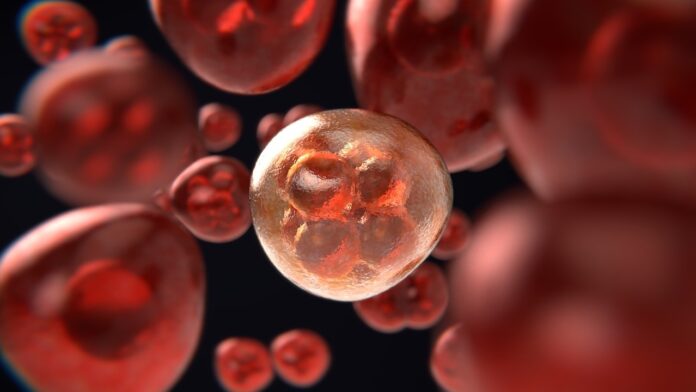The DNA damage response (DDR) is a collection of processes that detect and fix DNA damage to keep the stability of the genome. It is a defense mechanism organisms utilize against internal and external dangers such as UV light, environmental toxins, and cosmic radiation.
Researchers at CU Boulder discovered a protein that helps breast and ovarian cancer survive and develop. They found that inhibiting it kills cancer cells while leaving healthy cells alone.
The findings, published in the journal Molecular Cell, point to a promising new target for treating cancers caused by particular genetic mutations, such as BRCA1 and BRCA2 mutations. The discovery could lead to new medications with fewer side effects, which can combat cancer that has become resistant to current treatments.
Around 250,000 women are diagnosed with breast cancer yearly, and another 20,000 are diagnosed with ovarian cancer. Up to 80% of women with the most common kind of ovarian cancer develop treatment resistance.
Senior author Nausica Arnoult, an assistant professor of molecular, cellular, and developmental biology at the University of Colorado Boulder, said, “This is an important breakthrough for all of those women who have resistant cancers and for whom we now have nothing more to offer.”
The study focuses on the DNA damage response, a system found in all cells that identify damage to the double-stranded helix that carries genetic instructions and repairs its frayed ends.
He said, “Our DNA constantly gets damaged from the sun, the chemicals we breathe, and internal processes, and we and all living organisms have evolved mechanisms to repair that damage quickly.”
Some cells make mistakes, and mutations replicate when repair systems are compromised, such as when people inherit a mutant copy of the BRCA1 or BRCA2 gene. This could result in uncontrolled cell growth or cancer.
Mutations can also occur randomly due to environmental causes or other factors. The same defective repair mechanisms that can contribute to cancer formation also make cancer cells vulnerable to elimination.
Due to the lack of a key first-line DNA repair process called homologous recombination (HR), almost half of the ovarian cancers and a quarter of breast cancers must rely on the less dependable microhomology-mediated end-joining (MMEJ)pathway.
Arnoult and her colleagues discovered that a protein called APE2 is critical for repairing damaged DNA in cancer cells. They watched damaged cancer cells repair themselves in the lab.
They used the gene-editing technique CRISPR to determine which proteins were involved. When they reduced it genetically, the DNA damage response failed, and the cancer cells died.
Meanwhile, healthy cells that could rely on their first-line DNA damage response and did not require APE2 survived.
The researcher said, “We show that suppression of APE2 selectively kills cancer cells without affecting normal tissues and could be a powerful target to combat breast and ovarian cancers.”
Her team is not the first to target the DNA damage response, which some refer to as cancer’s “Achilles heel.”
Since 2015, thousands of ovarian and breast cancer patients have been treated with so-called “PARP inhibitors,” such as the blockbuster medicine olaparib, which works by disabling a different backup DNA self-repair pathway.
According to Arnout, Unfortunately, many cancers have become resistant to such medications, pushing scientists to look for new routes and targets.
Because many different types of cancer include mutations that make them vulnerable to inhibition of other DNA repair proteins, this discovery could be a powerful target to attack breast cancer and ovarian cancer.
They hope to find a tiny chemical that can block APE2, which might be given alongside other medications to improve results or as a backup option if resistance develops. Scientists can develop novel, focused medicines for various resistant cancers by better understanding these different mechanisms.
She said, “We can’t put all our eggs in one basket anymore. For many women, once cancer becomes resistant, there is no second-line therapy. We need to change that.”
Journal Reference:
- Fleury, Taylor, et al. The APE2 nuclease is essential for DNA double-strand break repair by microhomology-mediated end joining. Molecular Cell. DOI: 10.1016/j.molcel.2023.03.017
